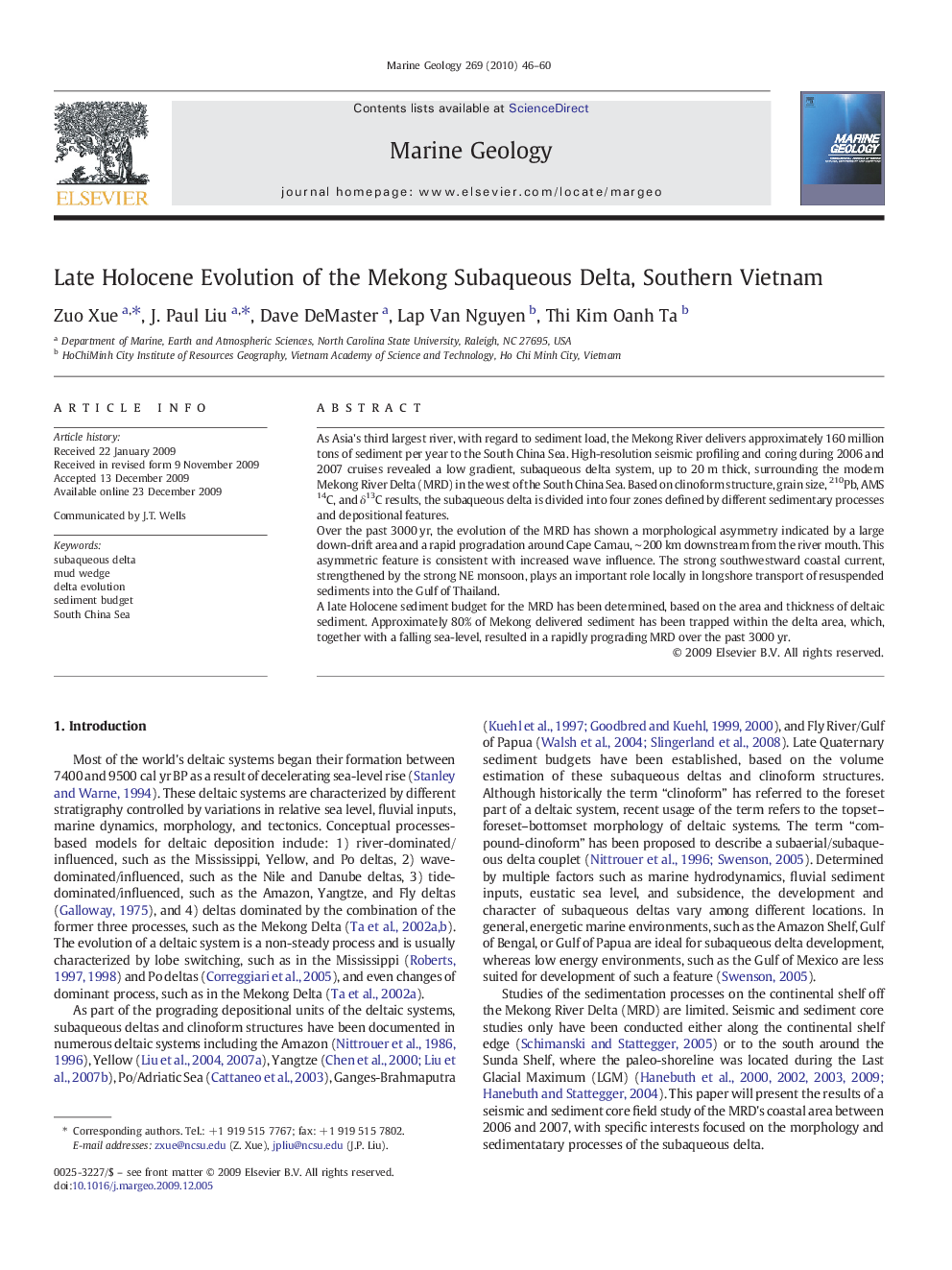| Article ID | Journal | Published Year | Pages | File Type |
|---|---|---|---|---|
| 4719019 | Marine Geology | 2010 | 15 Pages |
As Asia's third largest river, with regard to sediment load, the Mekong River delivers approximately 160 million tons of sediment per year to the South China Sea. High-resolution seismic profiling and coring during 2006 and 2007 cruises revealed a low gradient, subaqueous delta system, up to 20 m thick, surrounding the modern Mekong River Delta (MRD) in the west of the South China Sea. Based on clinoform structure, grain size, 210Pb, AMS 14C, and δ13C results, the subaqueous delta is divided into four zones defined by different sedimentary processes and depositional features.Over the past 3000 yr, the evolution of the MRD has shown a morphological asymmetry indicated by a large down-drift area and a rapid progradation around Cape Camau, ∼ 200 km downstream from the river mouth. This asymmetric feature is consistent with increased wave influence. The strong southwestward coastal current, strengthened by the strong NE monsoon, plays an important role locally in longshore transport of resuspended sediments into the Gulf of Thailand.A late Holocene sediment budget for the MRD has been determined, based on the area and thickness of deltaic sediment. Approximately 80% of Mekong delivered sediment has been trapped within the delta area, which, together with a falling sea-level, resulted in a rapidly prograding MRD over the past 3000 yr.
